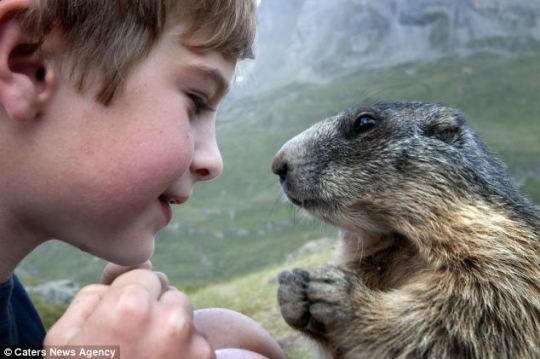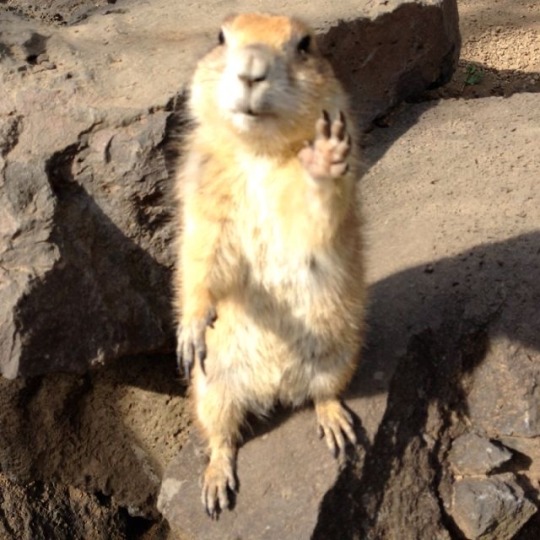#alpine marmot
Text

Marmotte au milieu des fleurs.
(Mai 2020).
A Julie…
© Quentin Douchet.
13 notes
·
View notes
Text

La Vie des Animaux Illustrée. Written by Alfred Brehm. Illustration by Robert Kretschmer. 1869 French edition.
Internet Archive
80 notes
·
View notes
Photo
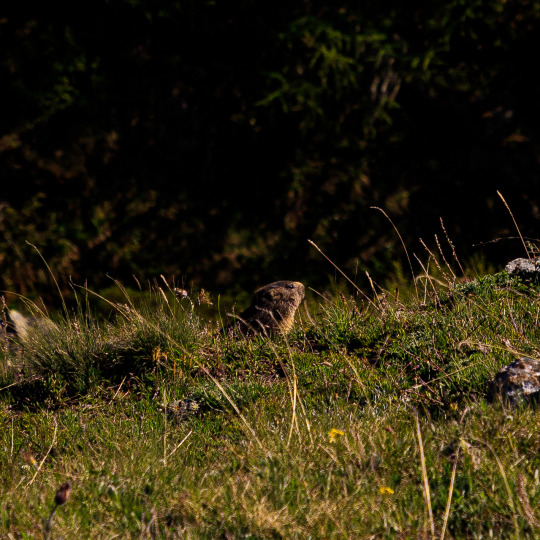
Alpine marmot peeking out of the burrow - Alpine Haute Route, June 2021
photo by: nature-hiking
#alpine marmot#marmot#wildlife#nature#mountains#alps#AHR#Alpine Haute Route#long distance trail#wilderness#hiking#trekking#landscape#photography#original photography#photographers on tumblr#AHR 2021
159 notes
·
View notes
Text

mamots
#omtai art#alpine marmot#traditional painting#acrylic painting#art#fuck yeah…#hashtag marmots#entranced by these little rodents#the badass one looks like an evilhamster
25 notes
·
View notes
Text
Alpine marmots

What would the Alps be without marmots? Alpine Marmots are a large species of squirrel that is mostly found in mountainous areas, mostly in Europe. Their average life span is around 16–18 years. Their favourite foods are plants, carrots, grains, insects, spiders, and worms. These cute little squirrels are one species that is sadly hunted down for sport. During the winter, the male marmot collects grass and builds a small nest. The male marmot collects good-quality grass materials to build his nest and keep his family warm. The marmots also keep themselves fat enough by doubling their body weight to ensure they are healthy and survive the winter. With snow already on the peaks, they waste no time and get ready to survive.
0 notes
Text

Have a selfie from this morning, ready to head out on a hike that turned out a bit more adventurous than anticipated 😅
#BUT#we saw MARMOTS#they were so cute#absolutely worth it all#alpine hiking#austrian alps#hiking#apieceofheart#travel
10 notes
·
View notes
Text

For the love of Nature there go I, HAORY MARMOT Origin: Northwest North America Inhabit rocky mountain and alpine regions and alpine meadows Gregarious and social animals Rodents ... Animal facts.
3 notes
·
View notes
Video
youtube
Hiking a 28.5 mile backpacking loop in Washington
#youtube#hiking#backpacking#washington#cascades#alpine lake#sunset#mt baker#national forest#marmot#owl#grouse#pacific northwest#pnwonderland#pnw#pnw aesthetic#pnw vibes#pnw photography#pacific crest trail#pct#white pass pilot ridge#camping#adventure#mountains#nature#outdoors#wilderness#glacier peak
1 note
·
View note
Text


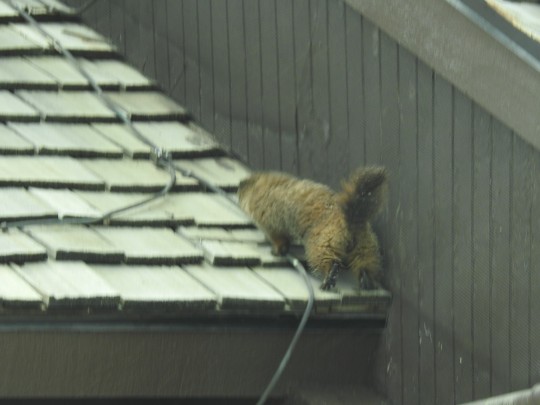
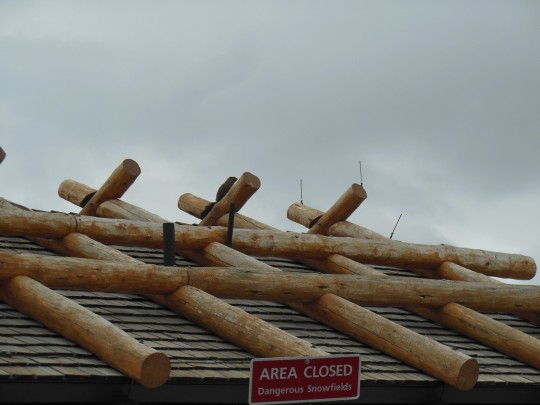
Yellow-bellied Marmot - June 2023
When we pulled into the Alpine Visitors Center of the Rocky Mountain National Park, a Yellow-bellied Marmot (Marmota flaviventris), was perched on the snow just beneath the roofline of the center. It was directly in front of the car, so I grabbed my camera and got a dozen or so images before I even turned off the car. The Marmot is a form of squirrel, but is much larger than most squirrels. At first I thought I was looking at a beaver, but when we went into the Visitors Center, we saw a stuffed one in the displays.<br><br>The first image is actually the last image I captured. The Marmot is posed looking around from one of the top roof braces of the center. The second image is it perched on the snowbank; the third is it climbing the roof; and the fourth image is a wide view of the Marmot just before it disappeared over the back side of the roof.
MWM
#colorado#rocky mountain national park#alpine visitors center#yellow-bellied marmot#marmota flaviventris
0 notes
Text
I felt my lungs inflate with the onrush of scenery – air, mountains, trees, people. I thought, “This is what it is to be happy.” – Sylvia Plath
How does wilderness make you feel?

Are you happy to view such natural beauty and splendor?
Does experiencing wilderness make you feel connected to the earth?

Is there a sweet relaxation as some of the stress of our busy lives sloughs away while immersing yourself in wilderness? ~ams

NPS Photo. Hoary marmot sitting in an alpine meadow eating surrounded by wildflowers. July, 2005. NPS/C. Meleedy Photo. Wonderland trail through tall trees with sun beaming down. Between Devil’s Dream campsites and Longmire. 2016. NPS/Climbing Ranger Photo. Climbing ranger climbing up South Tahoma Glacier towards Success Cleaver. May, 2019.
#NationalWildernessMonth#shareyourstory#national parks#mount rainier national park#mountain climbing#wilderness
44 notes
·
View notes
Text
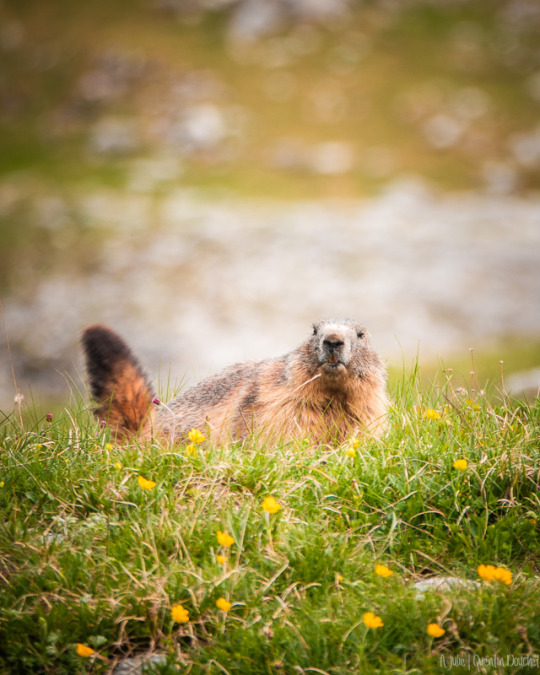
Marmotte.
(Auvergne-Rhône-Alpes - Juin 2023).
A Julie…
© Quentin Douchet.
32 notes
·
View notes
Text

La Vie des Animaux Illustrée. Written by Alfred Brehm. 1869 French edition.
Internet Archive
63 notes
·
View notes
Photo

Alpine marmot 24/? - Alpine Haute Route, June 2021
photo by: nature-hiking
#marmot#wildlife#alpine marmot#nature#alps#AHR#Alpine Haute Route#long distance trail#wilderness#hiking#trekking#landscape#photography#original photography#photographers on tumblr#AHR 2021
67 notes
·
View notes
Text
Mammals of the March of Maedhros
Fish, Birds, Flowers
Flora, fauna, geography and environment Masterlist
Other world building in the Himring tag!
The March of Maedhros was a cold realm in Northeastern Beleriand. It was located slightly Southeast of Dorthonion and south of the planes and meadowlands of Lothlann and Ard Galen. The March was a cold region with taiga forested hills and icy waters, including the sources of several rivers, namely Celon and Little Gelion which were located in the other Hills around Himring.
The March falls between the cold mountains on the Southern and Eastern borders of Dorthonion and the mountainous regions of the Gap and Thargelion on its own Eastern border.
Like my other posts of this kind I will include more world building notes at the end (relationship between people/elves and the fauna, symbology or significance of certain species in local cultures, etc), otherwise this would just be a long list of species. Please always feel free to ask more about this, it’s one of my favorite topics 
Taiga and tundra: musk deer: reindeer, red squirrel, tundra wolf, altai mole, brown bear, snow vole, taiga shrew
Other forest: forest dormouse, northern birch mouse, pine marten, sable, common shrew, northern pika, moose, lynx
Hills and alpine meadow: grey marmot, forest steppe marmot, long tailed ground squirrel, wild horse, beech marten, northern badger
Northern reaches: snow leopard, wild yak, snow sheep
Throughout: red fox, brown hare, Eastern roe deer, field mouse
World building notes:
-As it’s probably obvious by the art in my background, the idea of snow leopards in the March is very important to me! Some of the most skilled among Maedhros’s captains hunted and scouted along side them and their image came to represent the ruthless, efficient and precise nature of his fighters in art and heraldry 
-I also believe that they were wild otters in the rivers specifically northern Celon,the colder one, rather unique to the region. These were far larger than common otters and well adapted to the cold. 
-Horses were brought in large numbers, including the descendants of Valinor horses. In the March they are bred for endurance, and ability to withstand the cold and train to respond to almost entirely non-verbal commands, especially by some sections of the scouts who ride them
-I always imagine a location or locations similar to Lake Baikal in Siberia, which is home the world’s only completely freshwater seal as well as cnidarian species that are not found anywhere else in the world. The seals in thr near frozen lake are abundant but are rarely slain. They are near inedible though their fat is highly useful for oils and their skins are occasionally used as well. The lake is located north of Himring and was originally the result of geologic activity in the Ered Engrin.
-Reindeer are kept by some of the Noldor and their allies in the more remote regions of the march. Their fur, skin, meat, and milk are all used.
-Pine martens and sables are dear to the Avarin groups of northeast Beleriand, some members even taking them as companions or scouts. They represent will and joy in stories and art
-I like to imagine smaller species of mammoths or woolly rhinos trek through the March on their search for fresh grass and vegetation.
As always please feel free to ask more, I really love world building and I always feel these posts are incomplete
37 notes
·
View notes

